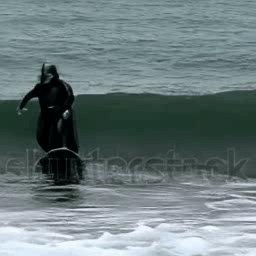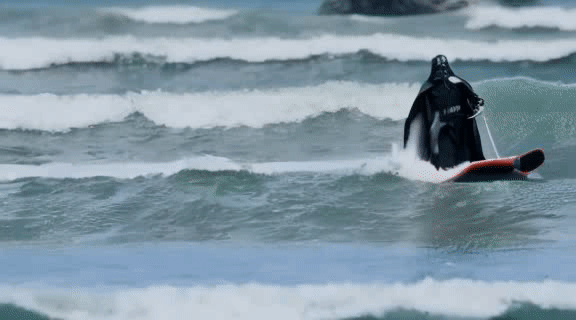Spaces:
Runtime error
A newer version of the Gradio SDK is available:
5.46.0
🧪 This pipeline is for research purposes only.
Text-to-video
VideoFusion: Decomposed Diffusion Models for High-Quality Video Generation is by Zhengxiong Luo, Dayou Chen, Yingya Zhang, Yan Huang, Liang Wang, Yujun Shen, Deli Zhao, Jingren Zhou, Tieniu Tan.
The abstract from the paper is:
A diffusion probabilistic model (DPM), which constructs a forward diffusion process by gradually adding noise to data points and learns the reverse denoising process to generate new samples, has been shown to handle complex data distribution. Despite its recent success in image synthesis, applying DPMs to video generation is still challenging due to high-dimensional data spaces. Previous methods usually adopt a standard diffusion process, where frames in the same video clip are destroyed with independent noises, ignoring the content redundancy and temporal correlation. This work presents a decomposed diffusion process via resolving the per-frame noise into a base noise that is shared among all frames and a residual noise that varies along the time axis. The denoising pipeline employs two jointly-learned networks to match the noise decomposition accordingly. Experiments on various datasets confirm that our approach, termed as VideoFusion, surpasses both GAN-based and diffusion-based alternatives in high-quality video generation. We further show that our decomposed formulation can benefit from pre-trained image diffusion models and well-support text-conditioned video creation.
You can find additional information about Text-to-Video on the project page, original codebase, and try it out in a demo. Official checkpoints can be found at damo-vilab and cerspense.
Usage example
text-to-video-ms-1.7b
Let's start by generating a short video with the default length of 16 frames (2s at 8 fps):
import torch
from diffusers import DiffusionPipeline
from diffusers.utils import export_to_video
pipe = DiffusionPipeline.from_pretrained("damo-vilab/text-to-video-ms-1.7b", torch_dtype=torch.float16, variant="fp16")
pipe = pipe.to("cuda")
prompt = "Spiderman is surfing"
video_frames = pipe(prompt).frames
video_path = export_to_video(video_frames)
video_path
Diffusers supports different optimization techniques to improve the latency and memory footprint of a pipeline. Since videos are often more memory-heavy than images, we can enable CPU offloading and VAE slicing to keep the memory footprint at bay.
Let's generate a video of 8 seconds (64 frames) on the same GPU using CPU offloading and VAE slicing:
import torch
from diffusers import DiffusionPipeline
from diffusers.utils import export_to_video
pipe = DiffusionPipeline.from_pretrained("damo-vilab/text-to-video-ms-1.7b", torch_dtype=torch.float16, variant="fp16")
pipe.enable_model_cpu_offload()
# memory optimization
pipe.enable_vae_slicing()
prompt = "Darth Vader surfing a wave"
video_frames = pipe(prompt, num_frames=64).frames
video_path = export_to_video(video_frames)
video_path
It just takes 7 GBs of GPU memory to generate the 64 video frames using PyTorch 2.0, "fp16" precision and the techniques mentioned above.
We can also use a different scheduler easily, using the same method we'd use for Stable Diffusion:
import torch
from diffusers import DiffusionPipeline, DPMSolverMultistepScheduler
from diffusers.utils import export_to_video
pipe = DiffusionPipeline.from_pretrained("damo-vilab/text-to-video-ms-1.7b", torch_dtype=torch.float16, variant="fp16")
pipe.scheduler = DPMSolverMultistepScheduler.from_config(pipe.scheduler.config)
pipe.enable_model_cpu_offload()
prompt = "Spiderman is surfing"
video_frames = pipe(prompt, num_inference_steps=25).frames
video_path = export_to_video(video_frames)
video_path
Here are some sample outputs:

|

|
cerspense/zeroscope_v2_576w & cerspense/zeroscope_v2_XL
Zeroscope are watermark-free model and have been trained on specific sizes such as 576x320 and 1024x576.
One should first generate a video using the lower resolution checkpoint cerspense/zeroscope_v2_576w with [TextToVideoSDPipeline],
which can then be upscaled using [VideoToVideoSDPipeline] and cerspense/zeroscope_v2_XL.
import torch
from diffusers import DiffusionPipeline
from diffusers.utils import export_to_video
pipe = DiffusionPipeline.from_pretrained("cerspense/zeroscope_v2_576w", torch_dtype=torch.float16)
pipe.enable_model_cpu_offload()
# memory optimization
pipe.unet.enable_forward_chunking(chunk_size=1, dim=1)
pipe.enable_vae_slicing()
prompt = "Darth Vader surfing a wave"
video_frames = pipe(prompt, num_frames=24).frames
video_path = export_to_video(video_frames)
video_path
Now the video can be upscaled:
pipe = DiffusionPipeline.from_pretrained("cerspense/zeroscope_v2_XL", torch_dtype=torch.float16)
pipe.scheduler = DPMSolverMultistepScheduler.from_config(pipe.scheduler.config)
pipe.enable_model_cpu_offload()
# memory optimization
pipe.unet.enable_forward_chunking(chunk_size=1, dim=1)
pipe.enable_vae_slicing()
video = [Image.fromarray(frame).resize((1024, 576)) for frame in video_frames]
video_frames = pipe(prompt, video=video, strength=0.6).frames
video_path = export_to_video(video_frames)
video_path
Here are some sample outputs:

|
TextToVideoSDPipeline
[[autodoc]] TextToVideoSDPipeline - all - call
VideoToVideoSDPipeline
[[autodoc]] VideoToVideoSDPipeline - all - call
TextToVideoSDPipelineOutput
[[autodoc]] pipelines.text_to_video_synthesis.TextToVideoSDPipelineOutput